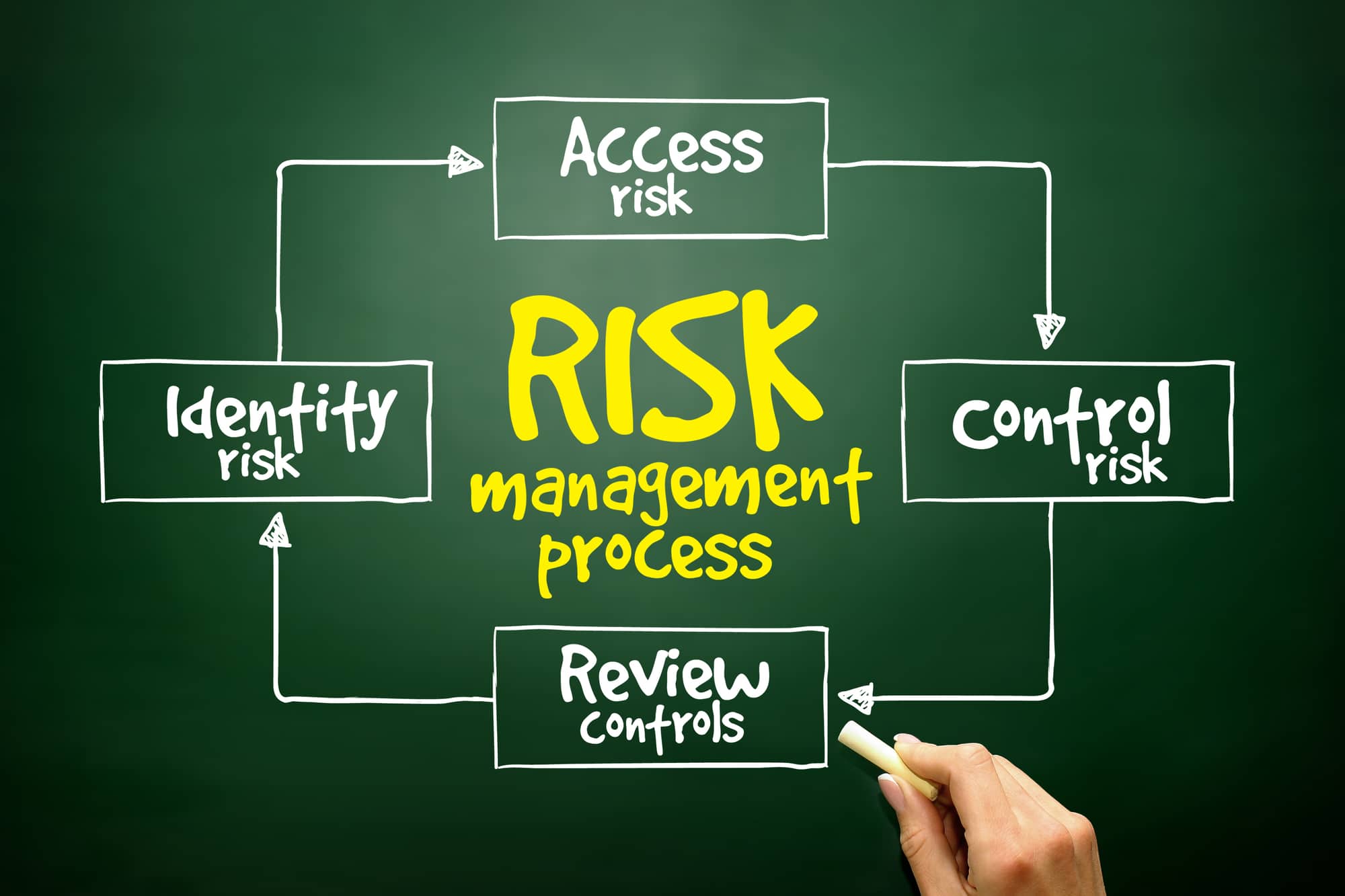As an entrepreneur, are you seeking ways to advance your business? Or are you a project manager tasked with evaluating a new venture's potential risks and benefits?
Whatever your role may be, one thing is for sure; every business project comes with its own set of risks and benefits.
To ensure your venture succeeds, you need to recognize and assess these factors with precision and objectivity. That's where Risk-Benefit Analysis comes in.
By analyzing a project's potential risks and benefits, you can make informed decisions and take calculated risks that will propel your business forward.
Are you prepared to acquire knowledge on how to conduct a thorough risk-benefit analysis and maximize your chances of success? Let's dive in!

What Is A Risk-Benefit Analysis?
Risk-benefit analysis systematically evaluates the potential risks and benefits of a particular course of action, decision, or project.
There are many tools used for risk management. However, risk-benefit analysis is commonly used in business, healthcare, government, and other fields where there is a need to assess the potential outcomes of different options and make informed decisions.
The goal of a risk-benefit analysis is to determine whether the benefits of a particular project or decision outweigh the potential risks associated with it.
By examining the potential benefits and risks in a structured and comprehensive way, a risk-benefit analysis can help businesses and organizations avoid costly mistakes and make strategic decisions that maximize their chances of success.
Who Should Perform Risk Benefit Analysis?
A risk-benefit analysis is an essential tool for any organization or business that wants to make informed decisions based on a comprehensive evaluation of potential risks and benefits.
Anyone involved in decision-making or project management should understand risk-benefit analysis well and be able to perform them.
Following are some of the stakeholders who should be involved in conducting a risk-benefit analysis:
Project Managers
Project managers are critical in successfully delivering a project from start to finish. They are responsible for overseeing the planning, execution, and monitoring of the project to ensure that it is completed in the given time, within budget, and meets the desired objectives.
As part of their responsibilities, project managers should understand the risk-benefit analysis to conduct it.
A risk-benefit analysis helps project managers to evaluate the risks and benefits associated with different project options and to make informed decisions on the basis of that analysis.
For example, when deciding between different project options, project managers can use a risk-benefit analysis to evaluate each option's potential risks and benefits.
By conducting a comprehensive analysis of the potential risks and benefits, project managers can identify potential risks that could impact the project's success and opportunities that could lead to improved project outcomes.
Project managers should also use risk-benefit analysis throughout the project lifecycle to monitor and manage potential risks and benefits.
As the project progresses, the project manager can update the risk-benefit analysis to reflect changes in the project environment and make informed decisions based on the most up-to-date information.
Risk Manager
Risk managers are responsible for assessing, identifying, and managing potential risks associated with a particular decision or project.
This involves identifying major potential risks that could impact the project or decision, assessing the likelihood and severity of those risks, and developing strategies to manage or mitigate those risks.
In the context of risk-benefit analysis, risk managers play a crucial role. They should know how to perform a risk-benefit analysis.
This involves identifying potential risks associated with different options, evaluating the likelihood and severity of those risks, and comparing them to the potential benefits of each option.
For example, if a company is thinking of launching a new product line, a risk manager would conduct a risk-benefit analysis to evaluate the potential risks and benefits of the decision.
The risk manager would identify potential risks associated with the product launch, such as competition, production costs, and marketing expenses, and assess the likelihood and severity of those risks.
They would then compare the potential risks to the potential benefits of the product launch, such as increased revenue, market share, and customer loyalty.
Based on the risk-benefit analysis, the risk manager would develop strategies to manage or mitigate the identified risks.
For example, they might recommend launching the product line in a limited market to test its performance before a full-scale launch.
They might also suggest strategies to minimize production costs or develop an effective marketing campaign to increase sales.
Business Analysts
Business analysts are professionals responsible for analyzing and evaluating business operations, processes, and strategies to identify areas for improvement.
They work closely with different departments and stakeholders to collect and analyze data on the basis of which they provide recommendations for improving business performance.
Business analysts play an important role in evaluating business strategies' potential risks and benefits.
A business analyst is responsible for identifying potential risks associated with different business strategies, assessing the severity of those risks, and comparing them to the potential benefits of each strategy.
For example, when companies consider merging with or acquiring another company, the business analyst conducts a risk-benefit analysis to evaluate the potential risks and benefits of the decision.
Business analysts would identify potential risks associated with the merger or acquisition, such as cultural differences, regulatory challenges, and legal liabilities.
They would then compare the potential risks to the benefits, such as increased market share, cost savings, and access to new markets.
Consultants and Advisors
Consultants and advisors provide specialized expertise and knowledge to help organizations solve complex problems and make informed decisions.
They are important in providing an outside perspective and expertise to assist with risk analysis techniques.
Consultants and advisors should understand the risk-benefit analysis process to provide insights and guidance on evaluating potential risks and benefits.
Their valuable input can help organizations identify potential risks they may not have considered and provide recommendations for minimizing them.
They can also help organizations evaluate the potential benefits of different strategies and provide recommendations for maximizing those benefits.

What Is The Purpose And Main Advantage of Risk-Benefit Analysis?
The risk-benefit analysis evaluates different options or decisions' potential risks and benefits. The main advantage of risk-benefit analysis is that it provides a systematic and objective approach to decision-making.
Organizations can identify potential risks and benefits by conducting a risk-benefit analysis and assessing their severity.
By having a thorough understanding of the information available, individuals can make informed decisions. Another advantage of risk-benefit analysis is that it can help organizations prioritize their resources.
By conducting a risk-benefit analysis, organizations can identify the most important risks and benefits associated with a decision and focus their resources on addressing and maximizing those risks.
This can help organizations make the most effective use of their resources and achieve their goals more efficiently.
Besides that, regulatory compliance is a crucial aspect of doing business. Not following regulatory and legal requirements can lead to serious legal, financial, and reputational consequences.
Risk-benefit analysis can help organizations identify potential risks and compliance issues and take steps to mitigate them, reducing their exposure to these risks.
For example, suppose a company is considering launching a new product. In that case, they can conduct a risk-benefit analysis to evaluate potential risks and compliance issues associated with the product.
This can include identifying regulatory requirements that need to be met, such as product safety standards, labeling requirements, and environmental regulations.
By conducting a risk-benefit analysis, the company can identify potential compliance issues and take steps to address them before launching the product.

What Is An Example of A Risk-Benefit Analysis?
Till now, we have been discussing what risk-benefit analysis is. However, now let's discuss a practical application of risk-benefit analysis so that you guys can know the application and the exact purpose of risk-benefit analysis.
Suppose a company is considering investing in new technology to automate their manufacturing process. The company wants to evaluate this decision's potential risks and benefits. They decide to conduct a risk-benefit analysis to make an informed decision.
The company identifies the potential risks associated with the new technology, which include:
- High cost of implementation and ongoing maintenance.
- Potential technical difficulties in implementing and integrating the new technology with existing systems.
- Potential job loss and resistance to change from employees.
The company also identifies the potential benefits associated with the new technology, which include:
- Increased efficiency and productivity in the manufacturing process.
- Cost savings in labor and materials.
- Improved product quality and consistency.
The company evaluates the likelihood and severity of each risk and benefit and determines that the benefits outweigh the risks.
As a result, the company decides to invest in the new technology. Still, it takes steps to mitigate the identified risks by providing employee training and support and ensuring proper technology maintenance.
Conducting a risk-benefit analysis helped the company evaluate the benefits and risks attached to the investment in new technology, enabling it to make an informed decision.
Moreover, The risk-benefit analysis allowed the company to identify potential risks and take the required measures to mitigate them while also identifying opportunities for increased efficiency and cost savings.

How To Perform A Risk-Benefit Analysis?
A risk-benefit analysis is crucial for evaluating any decision or project's potential risks and benefits.
The process involves four main steps: identification, analysis, evaluation, and decision-making. Let's proceed further and discuss each step of the risk-benefit analysis in detail.
Identification
The first step, identification, involves gathering information about the decision or project in question and identifying its potential risks and benefits.
This information can be extracted from a number of sources, including research studies, industry reports, and expert opinions. Therefore, it is essential to identify both the potential risks and benefits to ensure a comprehensive analysis.
Analysis
The next step, analysis, involves examining each potential risk and benefit's nature, severity, and likelihood.
This helps to identify the most significant risks and benefits and their potential impact on the decision or project. It is important to analyze each potential risk and benefit in detail to ensure nothing is overlooked.
Evaluation
After the potential risks and benefits have been analyzed, the next step is evaluation. This involves comparing the potential benefits and risks and determining whether the benefits outweigh the risks or vice versa.
The evaluation can be done in various ways, including through quantitative analysis, such as cost-benefit analysis, or qualitative analysis, such as using decision trees. It is important to consider the relevant factors when evaluating the potential risks and benefits.
Decision-Making
The final step in a risk-benefit analysis is decision-making. Based on the analysis and evaluation results, a decision is made about the project or decision in question.
The decision may be to move forward with the project or decision, to modify it to mitigate the risks, or to abandon it altogether.
When deciding, weighing the risks and benefits is crucial and choosing the option that best aligns with the organization's goals and values.
Conclusion
A risk-benefit analysis is an essential tool for businesses and organizations looking to make informed decisions based on a comprehensive evaluation of potential risks and benefits.
The goal of a risk-benefit analysis is to determine whether the benefits of a particular project or decision outweigh the potential risks associated with it.
Project managers, risk managers, business analysts, consultants, and advisors should all be involved in conducting risk-benefit analysis.
By examining the potential benefits and risks in a structured and comprehensive way, businesses can avoid costly mistakes and make strategic decisions that maximize their chances of success.
So, conducting a thorough risk-benefit analysis is key to taking your business to the next level.









